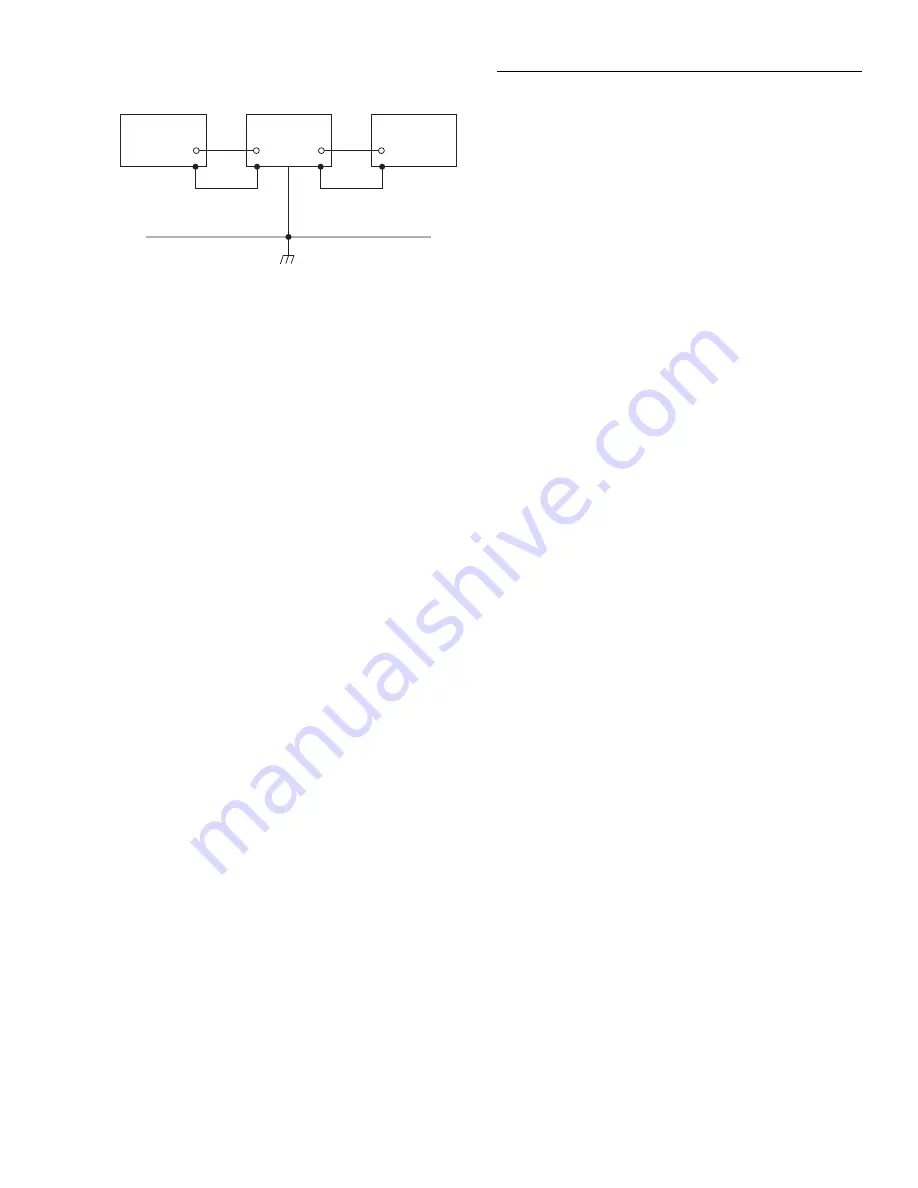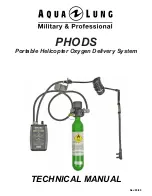
Front Panel Operation
2-127
2.21.2 Triboelectric effects
Triboelectric currents are generated by charges created be-
tween a conductor and an insulator due to friction. Here, free
electrons rub off the conductor and create a charge imbal-
ance that causes the current flow. For example, bending a tri-
axial cable causes friction between the center conductor (HI)
and its surrounding insulator resulting in triboelectric cur-
rents. Triboelectric currents can be minimized as follows:
• Use “low noise” cables. These cables are specially de-
signed to minimize charge generation and use graphite
to reduce friction. The Keithley Model 7078-TRX triax
cables are low noise.
• Use the shortest cables possible, and secure them (i.e.,
taping or tying) to a non-vibrating surface to keep them
from moving.
2.21.3 Piezoelectric and stored charge effects
Piezoelectric currents are generated when mechanical stress
is applied to certain insulating materials (i.e., crystalline). In
some plastics, pockets of stored charge cause the material to
behave in a similar manner.
When building test fixtures, choose good insulating materi-
als and make connecting structures as rigid as possible.
Make sure there are no mechanical stresses on the insulators.
2.21.4 Electrochemical effects
Error currents also arise from electrochemical effects when
ionic chemicals create weak batteries on a circuit board.
These batteries could generate a few nanoamps of current be-
tween conductors. Ionic contamination may be the result of
body oils, salts or solder flux. The problem is further en-
hanced by high humidity (moisture) that deceases insulation
resistance.
When building test fixtures, select insulators that resist water
absorption, and use the fixture in a moderate humidity envi-
ronment. Also, be sure that all insulators are kept clean and
free of contamination. Paragraph 2.4.6 provides general
cleaning tips.
2.21.5 Humidity
Excess humidity can reduce insulation resistance on PC
boards and in test connection insulators. Reduction in insu-
lation resistance can, of course, seriously affect high-imped-
ance measurements. Also, humidity (moisture) can combine
with contaminants to produce offset currents caused by elec-
trochemical effects (see paragraph 2.21.4). To minimize the
effects of moisture, keep humidity to a minimum (ideally
<50%), and keep components and connectors in the test sys-
tem clean. Paragraph 2.4.6 provides general cleaning tips.
2.21.6 Light
Some components, such as semiconductor junctions and
MOS capacitors on semiconductor wafers, are excellent light
detectors. Consequently, these components must be tested in
a light-free environment. While many test fixtures (i.e., Kei-
thley test fixtures) provide adequate light protection, others
may allow sufficient light penetration to affect the test results.
Areas to check for light leaks include doors and door hinges,
tubing entry points, and connectors or connector panels.
2.21.7 Electrostatic interference
Electrostatic interference occurs when a electrically charged
object is brought near an uncharged object, thus inducing a
charge on the previously uncharged object. Usually, effects
of such electrostatic action are not noticeable because low
impedance levels allow the induced charge to dissipate
quickly. However, the high impedance levels of many Model
6517A measurements do not allow these charges to decay
rapidly, and erroneous or unstable readings may result.
These erroneous or unstable readings may be caused in the
following ways:
1. DC electrostatic field can cause undetected errors or
noise in the reading.
2. AC electrostatic fields can cause errors by driving the in-
put preamplifier into saturation, or through rectification
that produces DC errors.
POWER LINE GROUND
INSTRUMENT
A
INSTRUMENT
B
INSTRUMENT
C
Figure 2-84
Eliminating ground loops
Содержание 6517A
Страница 1: ...Model 6517A Electrometer User s Manual A G R E A T E R M E A S U R E O F C O N F I D E N C E...
Страница 310: ...A Specifications...
Страница 311: ...A Specifications...
















































